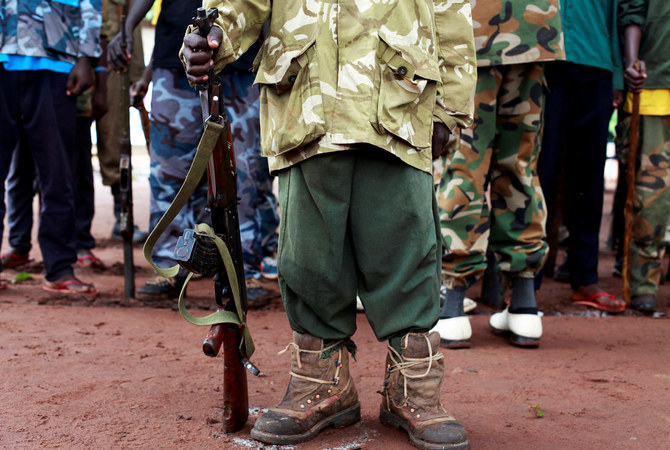
Almost a quarter of a century ago, on Dec. 3, 1997, more than 100 countries signed up to the Convention on the Prohibition of the Use, Stockpiling, Production and Transfer of Anti-Personnel Mines and on their Destruction, also known as the Ottawa Treaty, and agreed to curtail the use of land mines over the next decade.
The signatories agreed to halt the use of various weapons thought to specifically cause more damage to civilians and unintended targets than military targets.
Over the years, the convention has made some progress in achieving its objectives, with 164 countries now signed up. However, it has failed to achieve one of its key goals — ending the use of anti-personnel land mines. Though the production of new land mines and similar weapons has largely ended, 12 countries continue to possess the capability to produce them.
These include some of the most powerful military powers in the world, such as the US, China, India, Pakistan and Russia. Though Washington had promised to end their use and production in January 2020, it subsequently said it would reauthorize its military to use land mines, delivering a major blow to the agreement.
A few years earlier, Myanmar also began to produce and use land mines in its ongoing war with various rebel groups. And there are at least 60 million land mines stockpiled by the 33 countries that have not signed up to the deal.
In a development that is perhaps more worrying, several nonstate actors, including militias, mercenaries and terrorist organizations, have been producing and using crude land mines across the world, including in Afghanistan, Iraq, Libya and India. A report by Landmine Monitor said that both Russia and the US are developing new land mine systems primarily focused on vehicles, but these also pose a threat to pedestrians.
While stockpiled mines are a danger, a bigger and more immediate risk comes from mines that have already been deployed over the past century and which remain live.
Even in Europe, the main theater of the two world wars, one can stumble upon unexploded ordnance. There is even greater risk posed by mines laid down in Southeast Asia — Vietnam, Cambodia, Laos and beyond — and parts of the former Yugoslavia, as well as Africa and Latin America. Estimates say that more than 58 countries remain contaminated by land mines.
Though no definite number is available, there are believed to be as many as 110 million land mines strewn around the world, exploding every now and then as they are accidentally detonated, predominantly by civilians, leading to thousands of deaths and injuries annually.
Each year this decade has seen a new high in the number of global land mine casualties. Landmine Monitor says that, in 2020, at least 7,073 were recorded, with almost 2,500 deaths and more than 4,550 injuries — almost double the number recorded in 2013. More than 80 percent were civilians and almost half of all those killed or injured were children.
It is time for the global community to get together again and find solutions to prevent land mine casualties. While it may be more difficult, or even idealistic, to think that the world’s 12 largest armies would happily surrender the use of mines, it is time to not only mount pressure on the governments of these countries to minimize their use, but to take responsibility for clearing them after wars, instead of leaving it to a handful of nongovernmental organizations, or the hapless locals themselves, to make their homes and fields livable again.
Indeed, it may be worthwhile to at least have an agreement on this added to the Ottawa Treaty, with provision for those states that are not signatories to it in its entirety to have a limited responsibility relating to the status of mines and their removal within a set postwar time frame.
Mine manufacturers can make it easier for anyone, including NGOs with expertise in de-mining, to identify and remove their devices.
Ranvir S. Nayar
While ideally sanctions, including financial sanctions, could be applied to states that continue to violate this aspect of the treaty, considering that three permanent members of the UN Security Council — the US, Russia and China — are not on board yet and remain unlikely to agree to submit themselves to any sanctions, it may be more appropriate for civil society groups to pressure political leaders into action.
Moreover, mine manufacturers can make it easier for anyone, including NGOs with expertise in de-mining, to identify and remove their devices. With today’s semiconductor chips, sensors and radio-frequency identification, it may be inexpensive and easy to insert some sensors and chips into mines to allow remote deactivation, or at least to let them be identified and located from a safe distance.
Such moves would not only make a rapid return to normality possible in war zones, but save thousands of innocent lives every year. That, if nothing else, is reason enough to tread this path.
Ranvir S. Nayar is managing editor of Media India Group.












